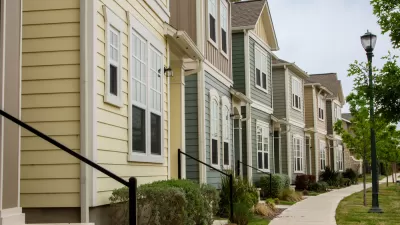More first-time, energy-conscious, urban home buyers with smaller households have contributed to a noticeable reduction in home size as shown in 2008-2009 housing Census data. Concurrently, lower-priced home sales outpaced more expensive homes.
Thirty years ago homes averaged 1700 sq. ft. Nonetheless, the 50 ft. drop to 2,422 sq.ft. from 2008-2009 is considered significant as home sizes had been increasing steadily.
"(T)he data do not indicate that buyers are looking for smaller homes because they think small is beautiful," Philadelphia economist Kevin Gillen, vice president of Econsult Corp, said. "Rather, they want homes that are more energy-efficient, with a more urban location and with fewer bedrooms, and that all naturally translates into a smaller home."
"On average, home sales for less than $350,000 have increased 12 percent year-over-year during the months since January 2009, while sales of houses priced from $350,000 to $900,000 have decreased 8 percent, said Michael Feder, president and CEO of Radar Logic of New York."
FULL STORY: As housing market shrinks, so does average size of new homes

Planetizen Federal Action Tracker
A weekly monitor of how Trump’s orders and actions are impacting planners and planning in America.

Restaurant Patios Were a Pandemic Win — Why Were They so Hard to Keep?
Social distancing requirements and changes in travel patterns prompted cities to pilot new uses for street and sidewalk space. Then it got complicated.

Map: Where Senate Republicans Want to Sell Your Public Lands
For public land advocates, the Senate Republicans’ proposal to sell millions of acres of public land in the West is “the biggest fight of their careers.”

Maui's Vacation Rental Debate Turns Ugly
Verbal attacks, misinformation campaigns and fistfights plague a high-stakes debate to convert thousands of vacation rentals into long-term housing.

San Francisco Suspends Traffic Calming Amidst Record Deaths
Citing “a challenging fiscal landscape,” the city will cease the program on the heels of 42 traffic deaths, including 24 pedestrians.

California Homeless Arrests, Citations Spike After Ruling
An investigation reveals that anti-homeless actions increased up to 500% after Grants Pass v. Johnson — even in cities claiming no policy change.
Urban Design for Planners 1: Software Tools
This six-course series explores essential urban design concepts using open source software and equips planners with the tools they need to participate fully in the urban design process.
Planning for Universal Design
Learn the tools for implementing Universal Design in planning regulations.
Heyer Gruel & Associates PA
JM Goldson LLC
Custer County Colorado
City of Camden Redevelopment Agency
City of Astoria
Transportation Research & Education Center (TREC) at Portland State University
Camden Redevelopment Agency
City of Claremont
Municipality of Princeton (NJ)




























